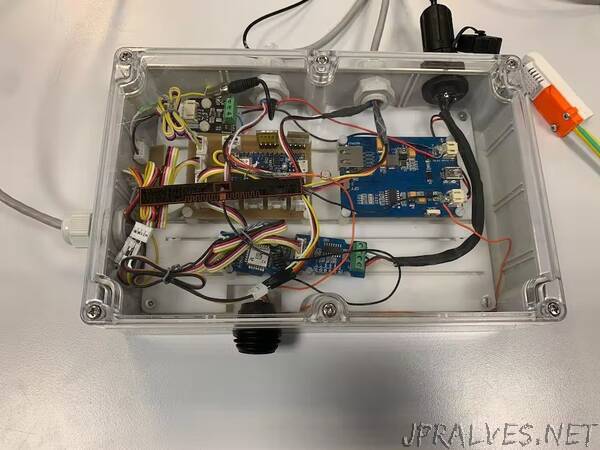
“This project aims to monitor remotely the evolution of a bee colony, thanks to a connected system equipped with sensors of all kind.
Story
Since the end of the 90’s, a phenomenon known as Colony Collapsse Disorder, among honey bees, has been observed. In addition, new weakening factors have appeared, such as vespa velutina (commonly called Asian hornets) and varroa (a parasite causing malformations). Climate change, the use of pesticides and the theft of hives do not help their case. This phenomenon also impacts us, because our survival depends on the survival of pollinating insects.
As part of our second year of engineering degree at Polytech Sorbonne, in Electronics and Computer Science, and in collaboration with the Plaisir Village Animation association, we have created a connected system for a beehive monitoring. Weight, temperature, humidity and luminosity data are sent through LoraWan and are processed on TTN and Beep to be shown to beekeepers.
Here are the different components of our project.
The Power module is comprised of a 3.7V, 1050maH battery, along with a solar pannel and a LiPo Rider Pro which ensures the charging of the battery through the solar pannel, and the alimentation of the system. There are also two 3.3V voltage regulators. The first one powers the system and is connected to a voltage divider, that will allow us to measure the percentage of the battery. The second one aims to limit the overall consumption of the system, by turning it on and off to shut off all the sensors that can’t be shutdown through software.
The sensors included in our project are the following :
A voltage/current sensor (INA219), that will measure the level of sunlight by connecting it to the solar pannel.
Two temperature and humidity sensors (DHT22), that will measure the temperature and humidity both inside and outside of the hive.
Two or three temperature probes (DS18B20) that will measure the temperature in several places of the inside of the hive.
A weight sensor, comprised of a load cell and an amplifier (HX711), that will measure the weight of the hive.
An audio sensor, comprised of a microphone and an amplifier, that will be used to measure at which frequencies the bees are the most active.
The communication module is provided by the LoRa-E5 module, that is connected to the Arduino with the RX and TX pins. It allows the system to communicate data OTA, by using Lorawan.
Finally, the microcontroller itself (the Nano 33 BLE Sense), whose wiring with the other modules are detailed on the image provided.
You may test the system before going to the next step, by wiring it with a breadboard.”
